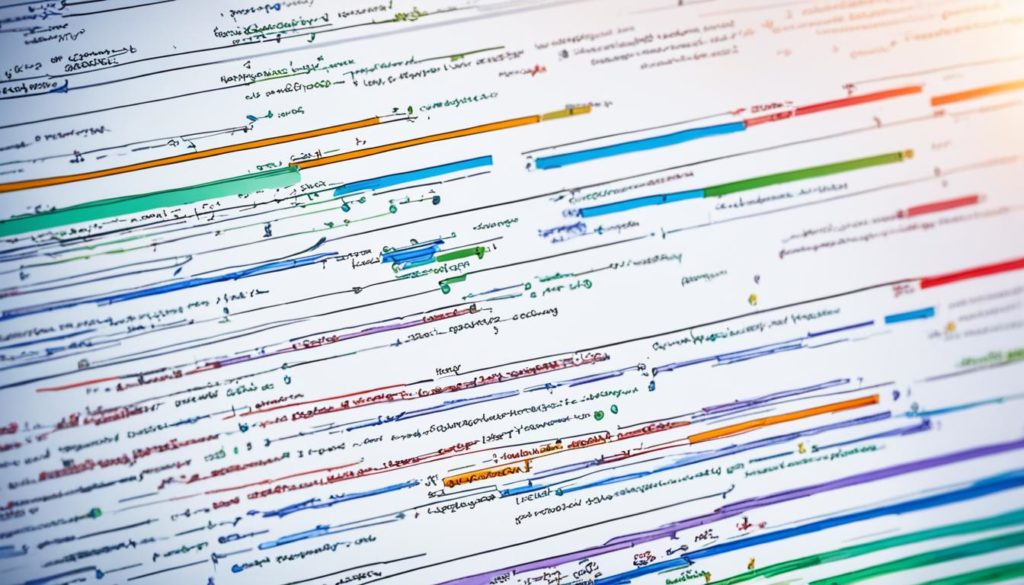
Did you know about 60% of software problems come from bad coding? This fact shows why it’s so important to use great Java static code analysis tools. Using these tools helps us find issues and security risks early. They also improve performance and keep quality high.
We will look at the best Java code analysis tools in this article. We’ll see how they stop common software problems and make code reviews better. These tools are key for any team trying to make reliable code or meet industry rules.
Key Takeaways
- Java static code analysis tools help in detecting frequent application glitches and security risks.
- These tools enforce adherence to coding standards and best practices.
- Utilizing the best code analysis tools enhances performance and streamlines the code review process.
- Java code quality testing tools are essential for maintaining high-quality Java applications.
- Top tools in the market are indispensable for any development team aiming to create robust code.
Introduction to Java Static Code Analysis
In Java, it’s crucial that code maintains high quality to keep apps robust and secure. Using static analysis tools early helps catch issues, boosting code quality and security. These tools are key for modern software development, finding potential flaws and keeping code standards.
What is Static Code Analysis?
Static code analysis looks over Java code without running the program. It scans the code to spot things like syntax mistakes, standard breaches, and security issues. Java code scanning tools help check coding practices and find common errors, improving code robustness.
Benefits and Drawbacks of Static Code Analysis
Static code analysis comes with big pluses like catching bugs early and sticking to code standards. Tools like FindBugs find security risks in Java code, while JaCoCo helps test code coverage. But, it has downsides like missing concurrency problems because it doesn’t run the code. Even so, pairing it with dynamic analysis gives a fuller code review. Tools like SonarQube merge features for better analysis and advice.
Static vs. Dynamic Code Analysis
It’s important to know the difference between static and dynamic code analysis. Static analysis checks code without running it, while dynamic analysis does. Dynamic tests show how code performs, finding errors and bottlenecks while running. Using both gives a detailed check of an app’s code quality. Tools like Infer offer insight into runtime behavior, catching issues static analysis can’t.
The Role of Java Static Analysis in Development
Java static analysis is key in boosting code quality and security. By using Java code review tools early, we can spot and fix issues before they happen in runtime. This helps a lot.
Common Issues Identified by Static Analysis Tools
Static analysis tools find many common problems in Java apps:
- Null Pointer Exceptions: Tools like SpotBugs check bugs in ten categories, including correctness and security. They also rank bugs by how severe they are.
- Resource Leak Identification: Find Security Bugs can find 141 security weaknesses in Java web and Android apps.
- Duplicate Code Blocks: PMD works with many languages and spots duplicated code. This helps keep the code consistent and easy to maintain.
- Security Vulnerabilities: Codacy uses PMD and Checkstyle to give instant feedback on coding standards and security risks like SQL injection or cross-site scripting.
- Coding Standard Violations: Checkstyle focuses on naming conventions and reports issues to make sure best practices are followed.
Enhancing Code Quality and Security
Using Java static analysis tools, we can greatly improve our apps’ code quality and security:
- Early Issue Detection: Tools like Infer, by Meta, find memory leaks and null pointer exceptions early. This saves debugging time later.
- Automated Code Reviews: With Java code inspection tools, code reviews are automated. This boosts the performance of our apps.
- Complementing Dynamic Analysis: While static analysis tools might not catch concurrency issues, they complement dynamic tools well. Together, they give a full view of code behavior.
- Cost Reduction: According to NIST, finding defects early can save lots of money. This is much cheaper than fixing issues after launch.
For more details on static code analysis in Java, see these resources on Java code inspection tools and Java code review tools.
Java Code Quality Tools for Effective Code Review
An effective code review process is essential for great software. Java code quality tools play a key role. They automate finding common coding mistakes, ensure coding standards, and find performance issues. Our review of Java static code analysis tools shows their big value.
Using these tools helps check code against best practices. This lets teams focus on adding features instead of manual reviews. With various features and integrations, these tools are crucial for keeping Java applications’ integrity and quality.
Let’s take a closer look at some of the top Java static analyzers and their role in effective code reviews:
- SonarQube: Highly regarded for its comprehensive code quality management and continuous inspection functionalities.
- Checkmarx: Known for its robust security scanning capabilities integrated with code review.
- PMD: Excels in detecting programming flaws and enforcing coding standards.
- FindBugs: Helpful in identifying bug patterns and common pitfalls, boosting productivity.
These tools do more than just streamline the review process. They also make sure programming follows coding standards. This leads to higher quality, more secure Java apps. By using these top Java static analyzers, we improve our development practices and deliver strong software solutions confidently.
Top Java Static Code Analysis Tools
When looking at improving code quality and safety, some top Java static analyzers stand out. Checkstyle is one such tool, praised for its ability to enforce coding standards. It checks naming conventions and reports on sizing issues, making it a favorite for keeping code clean.
SpotBugs is another essential tool, developed from the well-known FindBugs. It’s great at finding bug patterns and sorting warnings. With easy integration into IDEs and build tools, SpotBugs makes code analysis straightforward for developers.
PMD Java deserves recognition for spotting code style and performance issues. It’s a rule-based tool known for fitting smoothly into various development setups. For a deeper look into these tools, OWASP’s list of source code analysis is very informative.
The Sonar suite, with SonarLint, SonarQube, and SonarCloud, stands out for finding and fixing Java code issues. It deals with quality problems, security gaps, and bugs effectively.
Considering the cost and features of each tool is key. SonarQube costs $150/instance/year, while Codacy begins at $15/month. Tools like CAST Highlight may reach $10,000/year. For budget watchers, picking the right analysis tools is crucial to keep a balance. Using these tools early in development improves code quality and security. For a deep dive into top Java analyzers, check out the insights listed here.
FAQ
What is static code analysis?
Static code analysis checks source code without running the program. It finds errors by comparing code to rules. This improves code quality and security.
What are the benefits and drawbacks of static code analysis?
Using static code analysis helps find problems like SQL injections and improves code security. However, it can’t spot issues that happen only when the code runs. Using both static and dynamic analysis finds more bugs.
How does static code analysis differ from dynamic code analysis?
Static code analysis looks at code without running it, searching for errors and security risks. Dynamic analysis tests the code while it’s running, showing how the code behaves.
What common issues can Java static code analysis tools identify?
Java tools can spot many problems, like null pointer exceptions and security flaws. They keep code quality and security high.
How do Java static code analysis tools enhance code quality and security?
They automatically find coding mistakes and enforce standards. This keeps code from getting worse and stops security problems early on.
What are some popular Java static code analysis tools?
Checkstyle, SpotBugs, and PMD Java are well-liked tools. Checkstyle checks for consistency. SpotBugs looks for bugs. PMD Java finds style and performance issues. They help analyze code efficiently.
Why is an effective code review process essential?
It’s key because it finds common coding mistakes automatically. It keeps the code up to standard and finds problems early. This lets teams focus more on adding features than reviewing code by hand.
What role do Java code quality tools play in code review?
They’re important for checking code against best practices automatically. This maintains the high quality and integrity of Java applications efficiently.
Future App Studios is an award-winning software development & outsourcing company. Our team of experts is ready to craft the solution your company needs.










